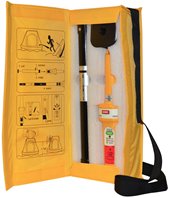The SART is mandatory on vessels over 300 GRT, but is now spreading to vessels that do not have the obligation, due to its added value in terms of safety.
The breakthrough of this technology happened in 2010 whenIMO recognizedAIS SART in the same way as SART radar, i.e. those who have SART obligation can freely decide between the two models. Since then, the market, for obvious safety reasons, has been oriented to the AIS SART. In fact, the SART radar can be detected only by X-band radars, while theAIS is much more widespread and the Coast Guard has AIS target detection systems now well refined. In addition, SART radar only detects a track where the distressed target should be, whereasAIS SART incorporates a significant package of information.
For a vessel sailing within 50 miles of the coast and therefore not required to have anEPIRB, the choice of an AIS SART is an alternative. Although we must remember that theEPIRB remains the safety device par excellence, some do not want to follow the small bureaucracies necessary for the installation, in these cases theAIS SART could be the consequent choice. In the case instead we are equipped with an EPIRB without AIS at that point theAIS SART would become totally complementary and able to significantly increase the overall level of security.
An AIS SART occupies a small space on the boat and in case of need is activated with extreme simplicity. At that point we will be promptly monitored by the coast guard or other vessels in the vicinity and the rescue will be easy. However, we must point out the limit in the range, in fact theAIS operating on VHF frequency and with a reduced power, can hardly be detected beyond 5 miles.





